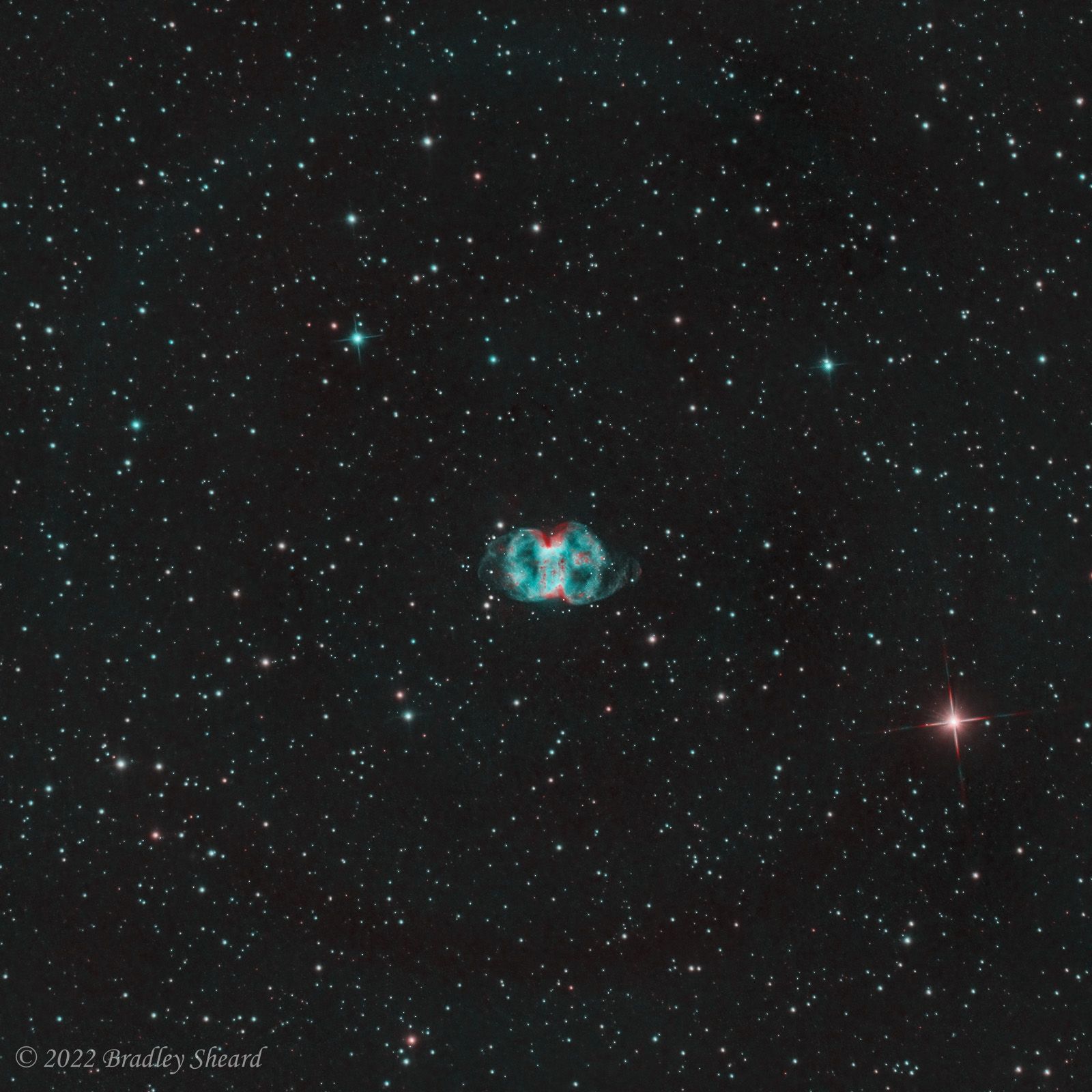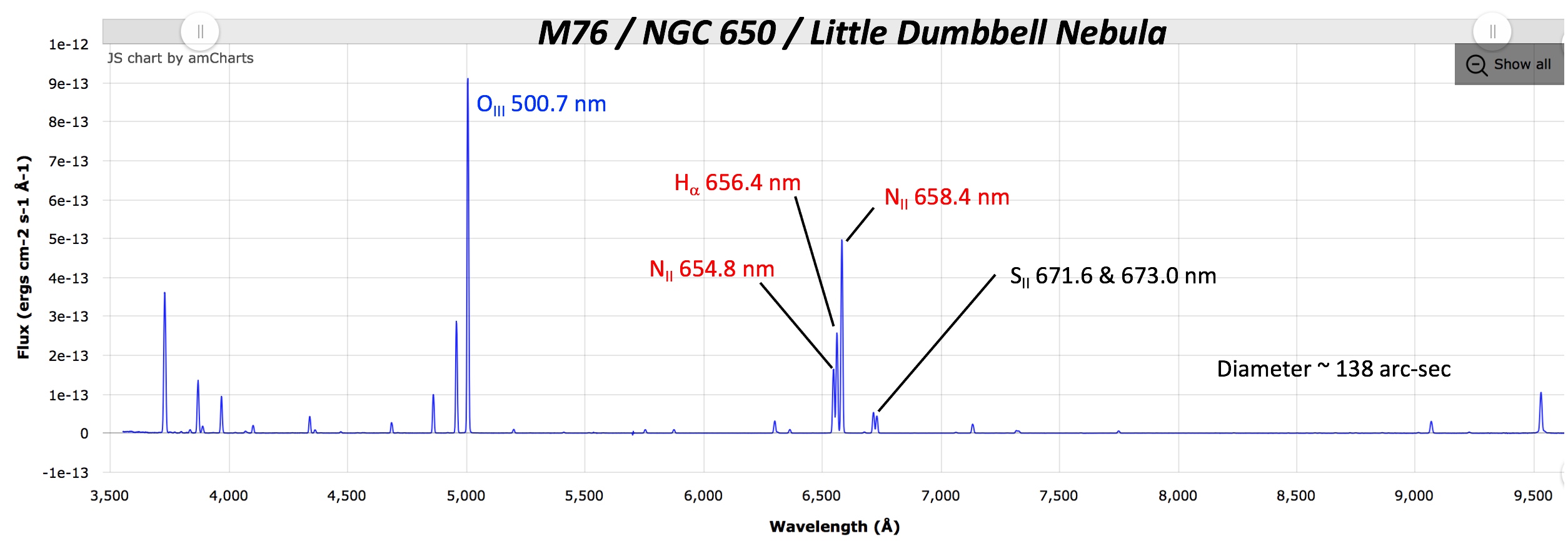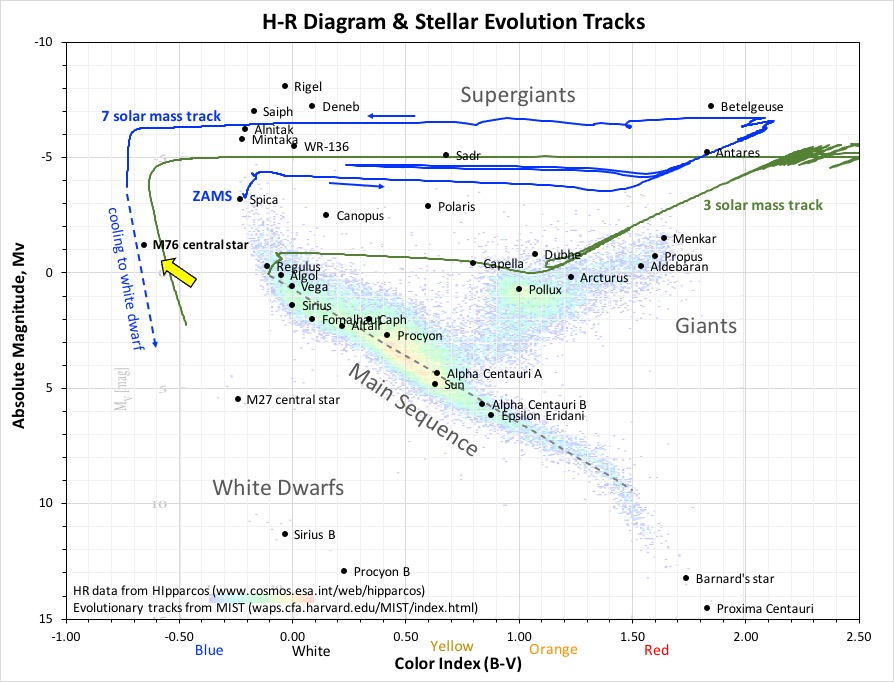M76 "Little Dumbbell Nebula" in the Constellation Perseus | |||
| « Previous | Back to Astrophotography Gallery | » Next | |
| Back to Planetary Nebula Gallery | |||
A star (like our sun) is a gigantic sphere of mostly gaseous hydrogen and helium, large enough that its self-gravity creates enough temperature and pressure in the core to fuse hydrogen into helium. This nuclear fusion is the source of the energy and light that the star emits, but eventually all stars (and our sun) will run out of fuel, and what happens next is entirely dependent on the star's initial mass. Ironically, small less massive stars can last for trillions of years, while large, massive stars live "fast and furious lives," burning through their fuel supply relatively quickly, and may last only a few million years. Stars that have an intial mass between 0.8 and 8 x the sun's, will first evolve into red giants when their core hydrogen fuel is used up. The end of central hydrogen fusion causes the core to contract, while the star's outer envelope expands and cools, shifting the light to cooler red wavelengths. As the core contracts, its pressure and temperature rises until fusion of helium, now the core's major constituent, becomes possible. The core is now fusing helium into carbon and oxygen, while a shell surrounding the core continues to fuse hydrogen into helium, adding more fuel to the core. Eventually core helum is exhausted, and stars of this mass range reach the end of the line. Central fusion ceases, causing the core to contract while the star's outer layers cool and expand, and the star sheds these outer layers forming a "planetary nebula" (funny name, nothing to do with planets). The carbon-oxygen core that is left behind forms a white dwarf that slowly cools over billions of years, but produces no new energy. The white dwarf emits large amounts of ultraviolet photons, which excite and/or ionize the gas shell, causing the gas to emit visible light photons as the electrons recombine with ionized atoms and spontaneously cascade down to lower energy levels. The glowing gas shells do not last very long (in astronomical terms at least), and after 10,000 - 100,000 years the shells dissipate into the interstellar medium, providing material for new star formation. M(essier)76, commonly known as the "Little Dumbbell Nebula," is a planetary nebula formed by the ejecta of just such a dying star. This is the smallest target I have tried to shoot, to date, and is only ~ 138 arc-secs in diameter. M76 lies approximately 1.2 kpc from our vantage point and is a typical example of a bi-polar planetary nebula. Reference 3 states "that the core is an inclined torus and the lobes are blown bubbles expanding in the polar directions." In my images, the central torus is aligned along the vertical axis, while the polar lobes lie along the horizontal axis. This reference also estimates the effective temperature and luminosity of the central star that formed the nebula to be 208,000 K and 261 x the solar luminosity. The progenitor of the central star is estimated to have had an original mass of between 3 and 7 solar masses. This information allows the star to be plotted on an H-R diagram, which is shown at the bottom of this page, along with evolutionary tracks for both 3 and 7 solar mass stars. |


